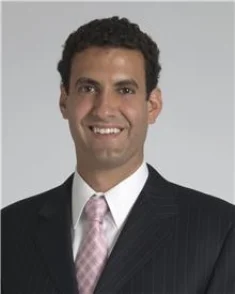Interview Dr. Peter Aziz


Leave blank
What caused you to enter this field?
I’m sort of a math, science, physics nerd at heart, and the way ion channels work and the way the heart functions seemed very cerebral and engaging – it just sparked those intellectual interests of mine. It was also a way of engaging with families as a unit – this is something that I enjoy about pediatrics. Managing and diagnosing and treating a pediatric patient, part and parcel of that, and an imperative in those discussions, is being able to provide care and explanation and rationale for the parents too. The ion channelopathy/ heart rhythm disorder part of it really throws it in your face, because it isn’t just a disease in a patient, it’s a disease in a family, and the way a child deals with it and the way a mom and dad deal with it are different – you have to be mindful enough of that to be able to engage all of those different factors and still provide care that is comprehensive and consistent.
What are you most excited about in current research?
I’ve been an electrophysiologist for ten years, and in that time frame I’ve seen a lot progress in the channelopathy world. The genotype/phenotype relation piece has taken the forefront, where we can predict what clinical manifestations of a disease we’re going to see based on the genotype. But we also realize how that falls short in some ways – we think we understand what’s going to happen and it turns out that there are other factors that are involved, likely genetic, that potentially influence what we see and we just don’t really understand what those are yet. The other part that really intrigues me is the patients that have experienced Sudden Cardiac Death, or have had an event, and we just don’t know what happened to them. We evaluate them after the fact, and half of the time we still can’t give them an answer as to what’s wrong. When we have that many people that are young, that are experiencing life-threatening events, and we can’t tell their families what’s wrong – I’m really anxious to see what we figure out about those patients.
What’s a patient story that sticks with you?
There’s so many of them! The patient stories that most resonate are the ones where something tragic happens and a patient is able to extract from that experience something that becomes inspiring to them, and they use that inspiration to help others. There’s lots of examples of this. I feel like my patients have shaped my life and their own lives in such profound ways. One example that comes to mind is this young gentleman, he was a track athlete and he had an arrest right after he finished running. He is a very dynamic person, people are drawn to him and inspired by him. He used that as a podium, a way to get up in front of people and say it’s time that we become aware of the risks of Sudden Cardiac Death, and talked about getting AEDs out there.
How and why are you involved with the SADS Foundation?
I got involved with the SADS Foundation ten years ago when I started as an electrophysiologist. I heard about the good work that they were doing, their ability to provide information for patients and resources for patients – I found that to be really inspiring to me. All the people I’ve met at SADS are excellent human beings, and that’s another reason I’m so compelled to be a part of the organization and volunteer my time to help. And I think we’ve heard feedback from patients time and time again about how useful the organization is, the website is, all those things make SADS, for me, a very attractive thing to be a part of and I’m so happy to part of it for this long.
